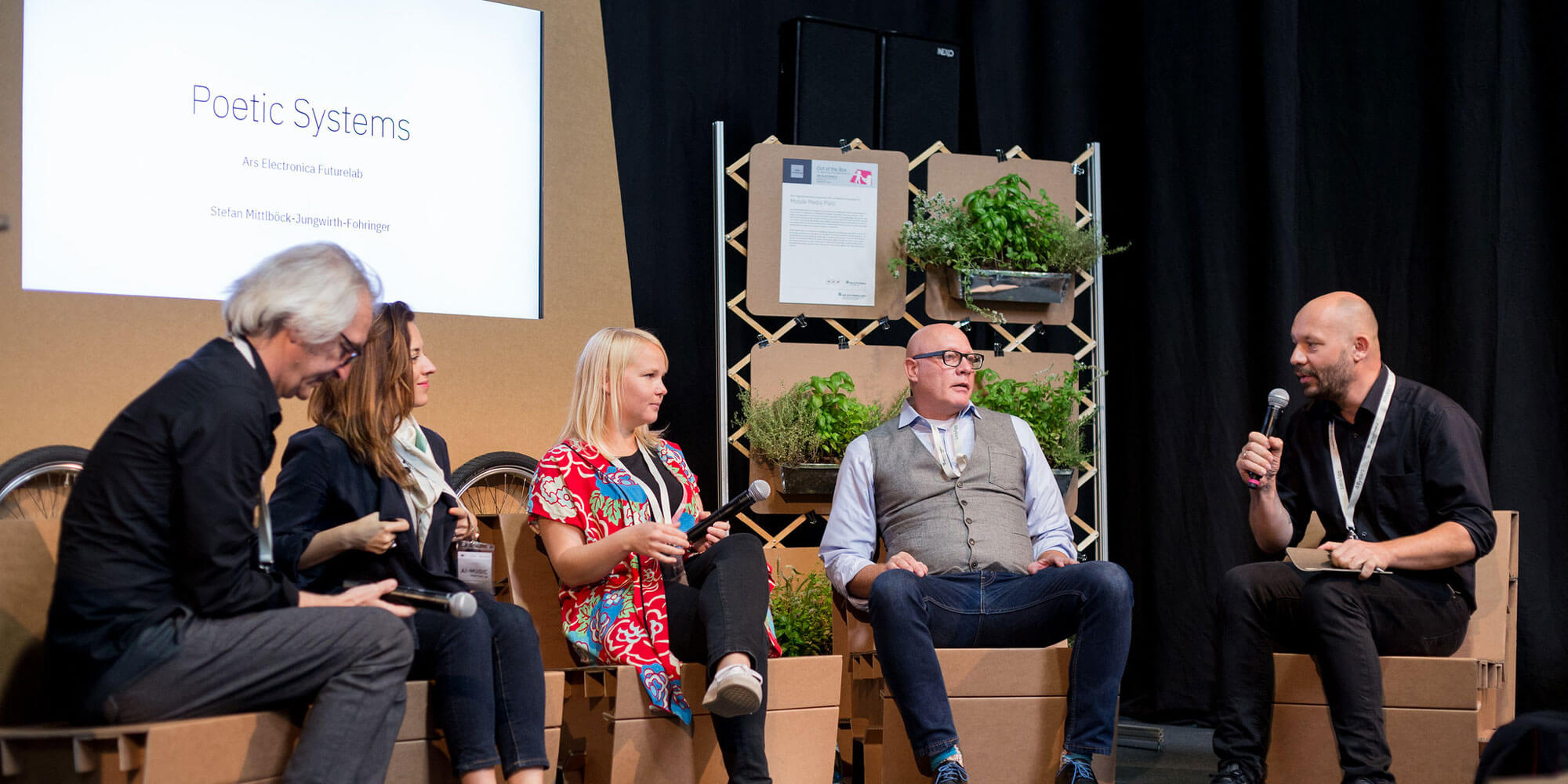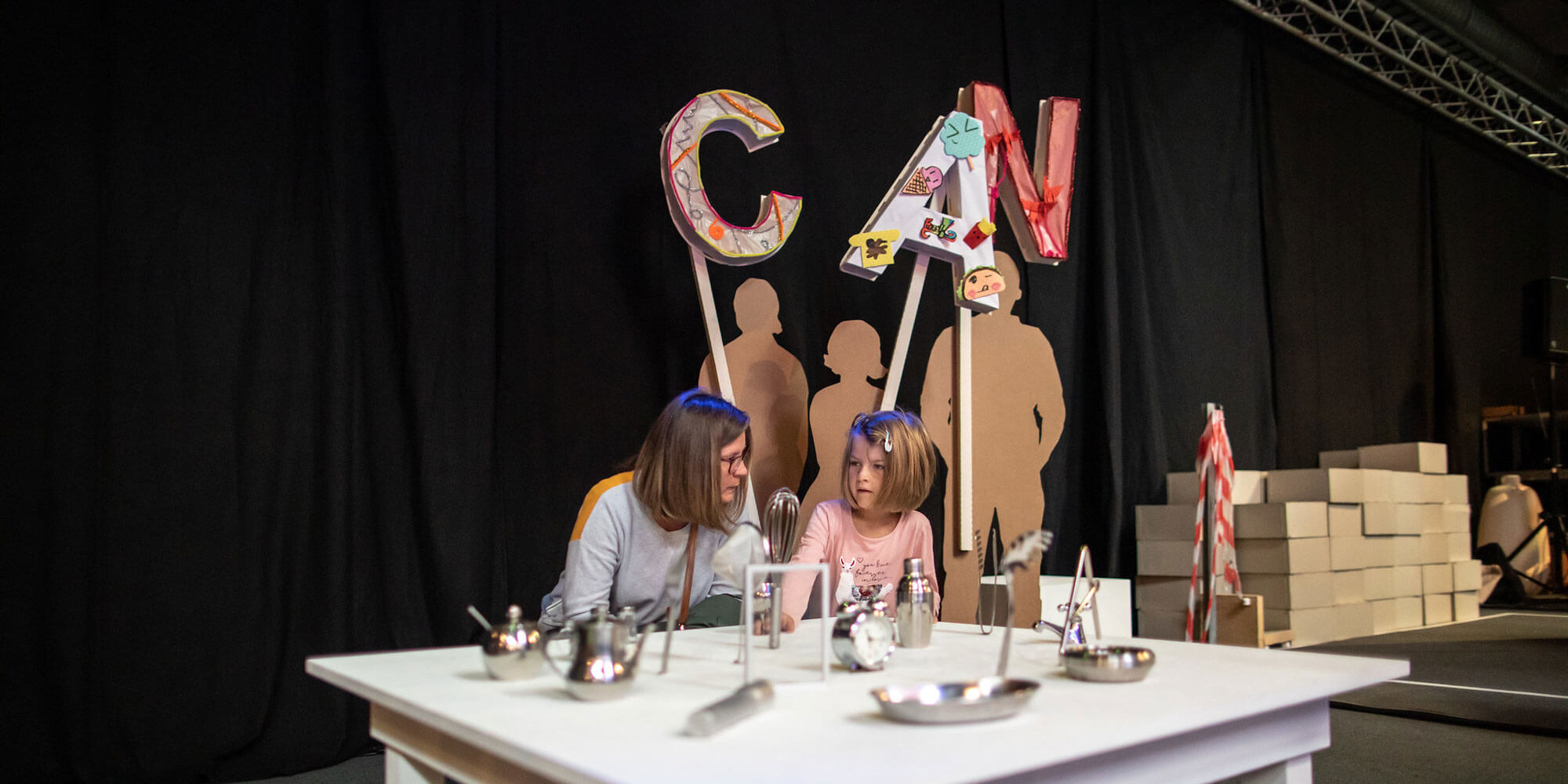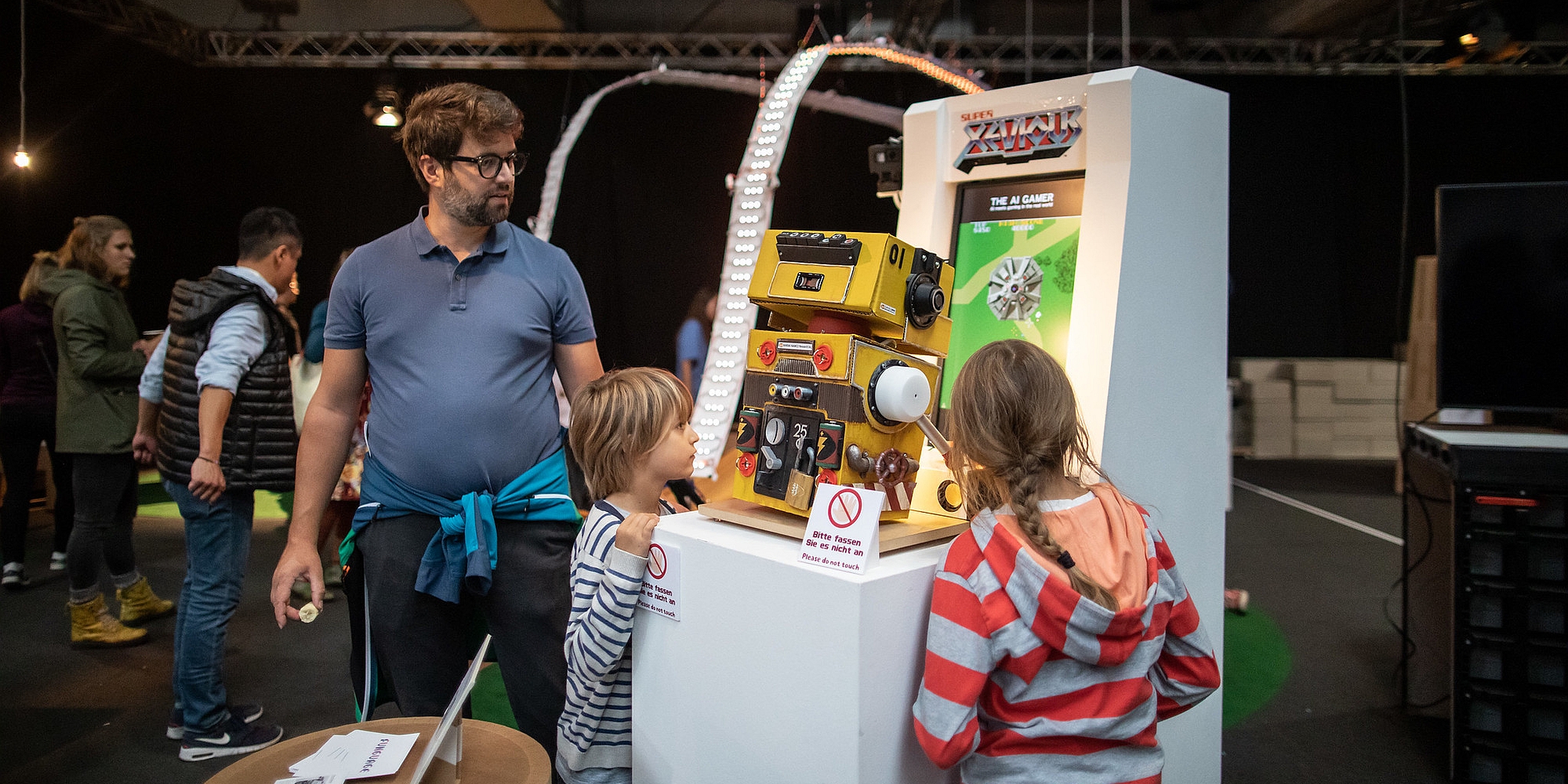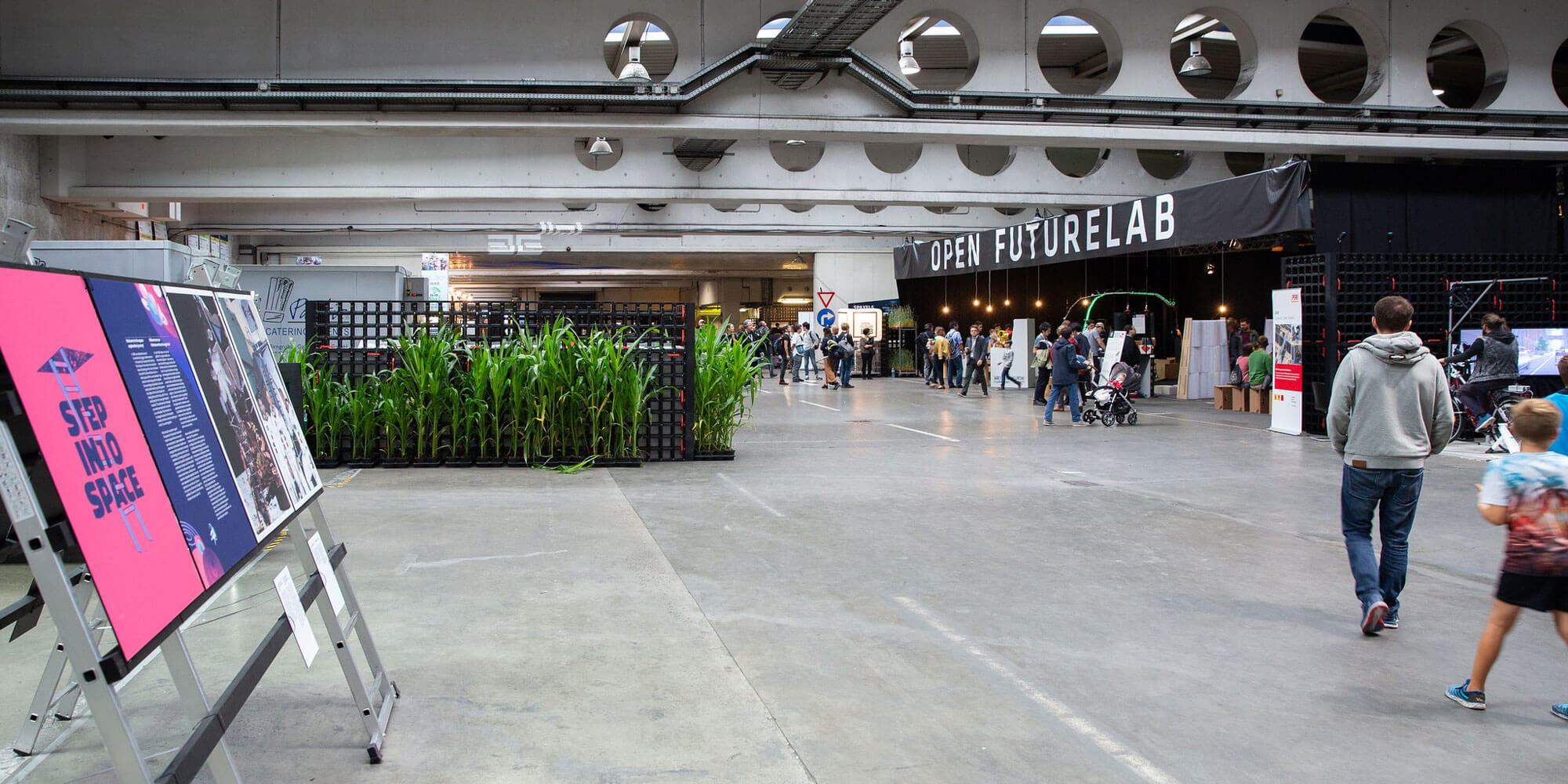The festival site at POSTCITY in Linz was used as a stage for Open Futurelab until 2019. Created with the Japanese public broadcasting company NHK, Media Platz was a prototype of an open media plaza consisting of cardboard and high-resolution screens, which was used as a forum for public debate. Various panel discussions took place there, including ‘What role should the future of laboratory play for better society?
In the workshops, students, artists and researchers focused on technologies for automatic music generation and discussed how AI and humans can collaborate in music production.
The FUNGUAGE Room exhibition also featured the latest prototypes of what future communication between people and objects will look like, and how people can connect with each other beyond words. Ars Electronica Futurelab, the world-leading entertainment company Namco Bandai Group and communication design company Hakuhodo have been researching this question since 2017, based on the idea that FUN can transcend cultural boundaries. In this FUNGUAGE Room, the design strategy FUNGUAGE was presented as an outcome of this research through various prototypes.
Open Futurelab 2019 overview festival programme
Video Impressions Open Futurelab 2019, Video: Bandai Namco Research
Read more about FUNGUAGE Room exhibition at Open Futurelab 2019 on the Ars Electronica Blog.
Credits
Ars Electronica Futurelab: Flavia Andessner, Florian Berger, Patrick Berger, Kerstin Blätterbinder, Arno Deutschbauer, Ivor Diosi, Samuel Jakob Eckl, Marianne Eisl, Peter Freudling, Matthew Gardiner, Roland Haring, Peter Holzkorn, Horst Hörtner, Kyoko Kunoh, Anna Kuthan, Christopher Lindinger, Elisabeth Luger, Maria Mayr, Stefan Mittlböck-Jungwirth-Fohringer, Otto Naderer, Nicolas Naveau, Ali Nikrang, Hideaki Ogawa, Maria Pfeifer, Johannes Pöll, Daniel Rammer, Erwin Reitböck, Clemens Francis Scharfen, Raphael Elias Schaumburg-Lippe, Simon Schmid, Susanne Teufelauer









